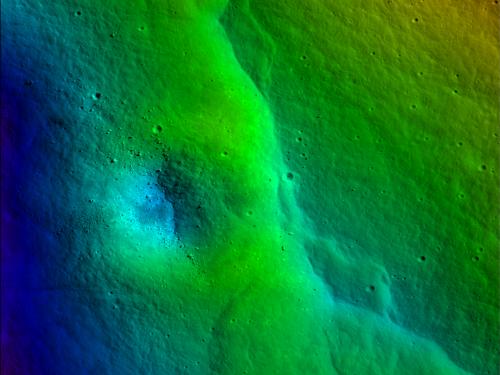
Stories of daring, stories of technological feats, stories of prevailing against the odds ... these are the stories we tell at the National Air and Space Museum. Dive in to the stories below to discover, learn, and be inspired.
Showing 101 - 110 of 145

August 04, 2016
On this day in 2007, the Mars Phoenix lander was launched from a Delta II at Cape Canaveral Air Force Station, Florida. Phoenix flew to a site in the far northern plains of Mars where it analyzed components of the surface, subsurface, and atmosphere.

July 25, 2016
As the National Air and Space Museum’s annual Mars Day! celebration approaches, we look to a recent research trip taken by a Smithsonian Summer Intern to investigate the similarities between some of Earth’s most amazing dunes and those found on the ruddy surface of Mars.

July 13, 2016
Radar instruments play an important role in our study of Earth’s nearest neighbors, such as the Moon, Venus, and Mars. Radar can provide a range of information regarding the materials that make up the surface of a planet and offer a unique perspective on the underlying structure. To get the most out of our research it is important to have a fundamental understanding of the hardware that makes up a radar instrument. What better way to achieve this than build our own.

September 30, 2015
The recent announcement by NASA that there is evidence of salty, liquid water seeping out of the ground on Mars is both exciting and scientifically puzzling at the same time. As a member of the science team for the High Resolution Imaging Science Experiment (HiRISE) camera on board the Mars Reconnaissance Orbiter (MRO), I’ve been hearing about these possible seeps, or Recurring Slope Lineae (RSL), for several years now.

September 18, 2015
Planetary science is one of those fields of research where you can always count on being surprised. The remarkable terrain of Pluto and Charon in images being sent back by the New Horizons spacecraft certainly qualifies. One of my all-time big surprises is from a recent discovery on an object much closer to home—the Moon.

September 02, 2015
The National Air and Space Museum's full-scale mockup of the Pioneer 10 spacecraft was recently moved to its new location in the Boeing Milestones of Flight Hall as a part of a major renovation to the gallery.

August 22, 2015
On July 13 and 14, I was invited to visit the Johns Hopkins University Applied Physics Laboratory in Laurel, Maryland, for the New Horizons Pluto Flyby Events.

August 21, 2015
On July 14, the New Horizons spacecraft completed a 9.5-year-long, 4.8-billion kilometer (3-billion mile) journey to the object furthest from the Sun to be visited by a spacecraft.

July 10, 2015
As we await the exciting results of New Horizons’ flyby of Pluto on July 14, it is all too easy to think that this mission was inevitable: the capstone to NASA’s spectacular exploration of all the planets (and ex-planets) of the solar system since the 1960s. Yet, it proved extraordinarily difficult to sustain a Pluto project.

July 02, 2015
Much of the Moon is blanketed by a thick layer of dust, built up from the rocky surface over billions of years by the impacts of small meteorites. Hidden beneath the dust is evidence of ancient geologic activity – great volcanic eruptions, tectonic shifts in the crust, and vast deposits of once-molten material hurled outward during the formation of the giant impact basins.